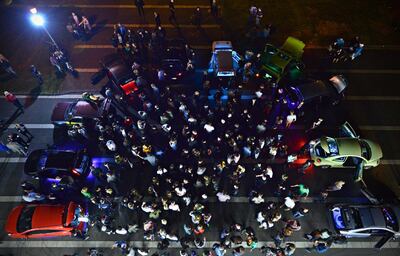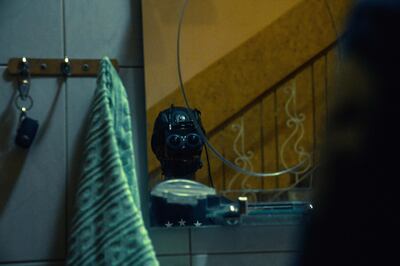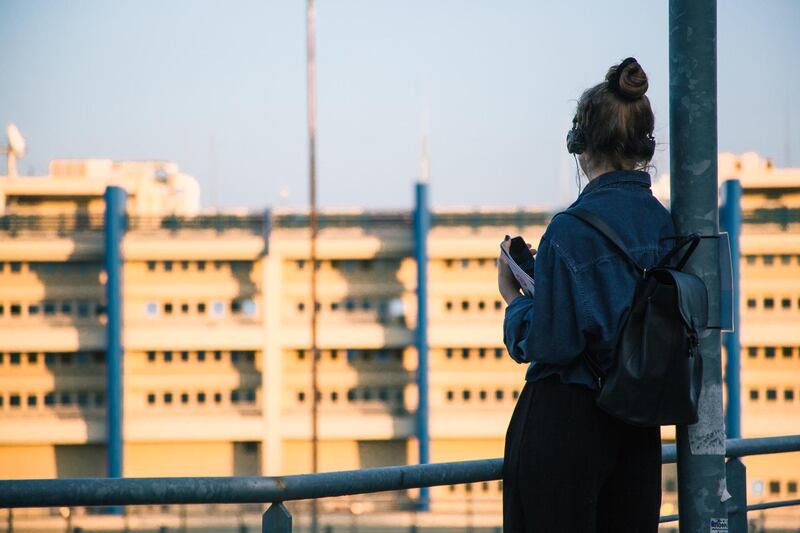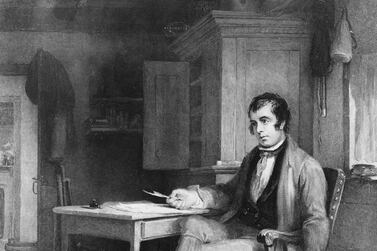In the 1970s, the Japanese roboticist Masahiro Mori coined the term “uncanny valley” for the spectrum of emotions that people have in response to robots.
If they are not done well enough, they are not taken seriously. But make them too lifelike and people are frightened, or even disgusted.
The sixth edition of Durub Al Tawaya, the performance strand of Abu Dhabi Art, adopts this idea and looks at the way artists use technology to take their performances — their constructions of alternate realities — outside the theatres, proscenium stages and gallery halls in which they're typically sited.
Tarek Abou El Fatouh, the curator of the programme, has commissioned artists to disperse their works throughout Abu Dhabi, or asked them to use technology in new, and often unsettling, ways.
This weekend (January 25-26), you can catch the last three installments of the programme
Joe Namy's Automobile II will be performed at 7pm and 8pm on Abu Dhabi's Corniche on Thursday night. Namy takes over the sound systems of supercars and uses them for his own speaker system. For this work he's collaborating with two local DJs on the Corniche's popular semi-circle near the public beach, turning the capital's usually insular car culture into a large-scale open event.

Akira Takayama's Heterotopia, starting from the Cultural Foundation, guides visitors via an app to different sites throughout the city, where they hear recordings of stories, commissioned from local and international writers, that might have taken place at that site.
Meanwhile, at Manarat Al Saadiyat, three times daily this Thursday, Friday and Saturday, the Japanese artist Meiro Koizumi uses virtual reality (VR) to animate the experience of a young Iraqi man who lived through the Iraq War.
“It’s an exceptional experience,” says Abou El Fatouh. “You get to see the word from the point of view of a witness to the war. Even me, I was confused: am I seeing this, or is it him? You are feeling his feelings, you see the war from his eyes.”

Visitors don the VR headset and are placed into the mind of another, and into a story both horrific and based in reality.
'Uncanny valley'
Abou El Fatouh explains he was interested in the relationship between Mori’s uncanny valley and Arab histories of puppetry and shadow play, which similarly impersonate people in order to enliven stories and gave, he writes, their makers “unprecedented freedom” of expression.
“The shadow puppets allowed the artist to create satirical and fantastical characters that mirrored the real characters in the marketplace, transforming his audience’s likely initial discomfort into laughter,” he writes in a catalogue essay.
The Durub Al Tawaya programme has included hits from previous years, such as Anna Rispoli’s narrated dhow journey Five Attempts to Speak to an Alien and the overwhelmingly popular performance “Remote Abu Dhabi” by Rimini Protokoll, which takes participants on a tour of the city, goaded through instructions in their headsets.
“I am drawing the similarities through the histories of these practices,” Abou El Fatouh explains. “I want to use technology to show how we can affect new kinds of feeling.”
For the full programme of Durub Al Tawaya click here.







